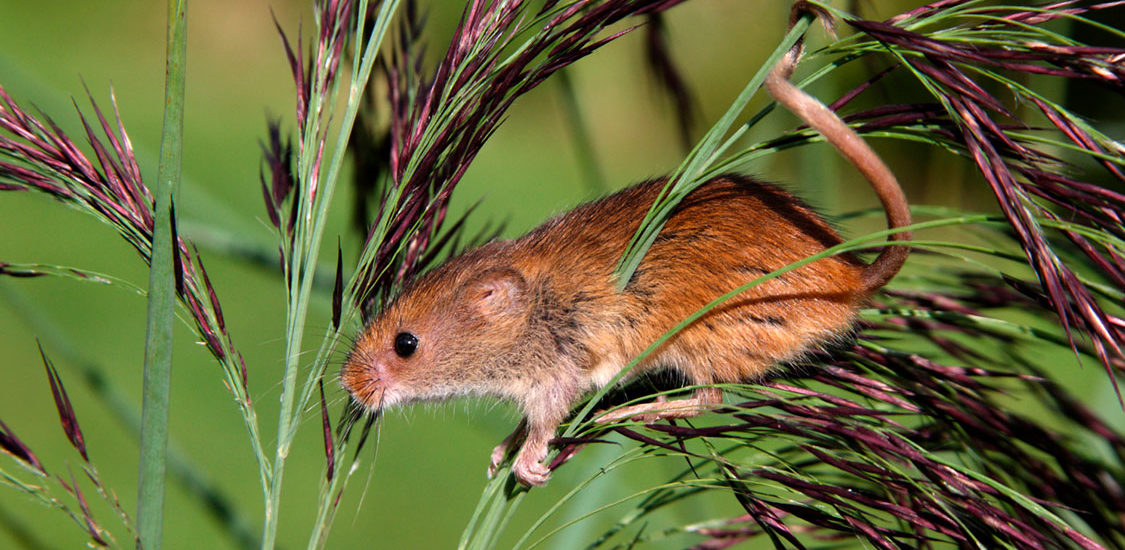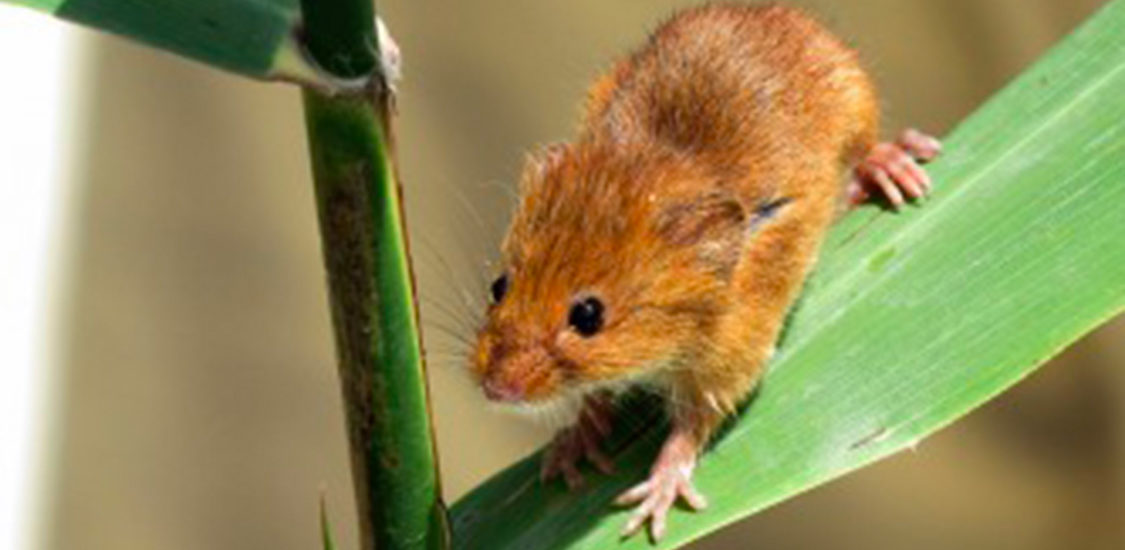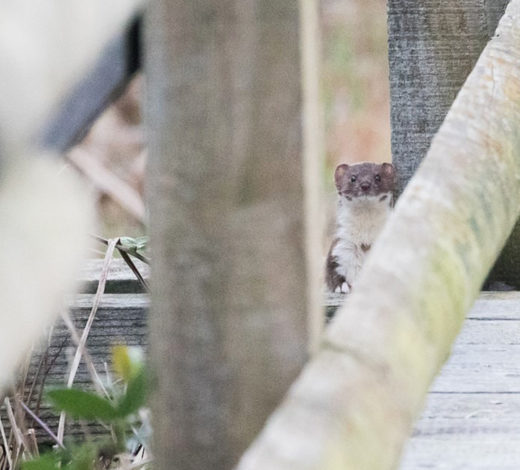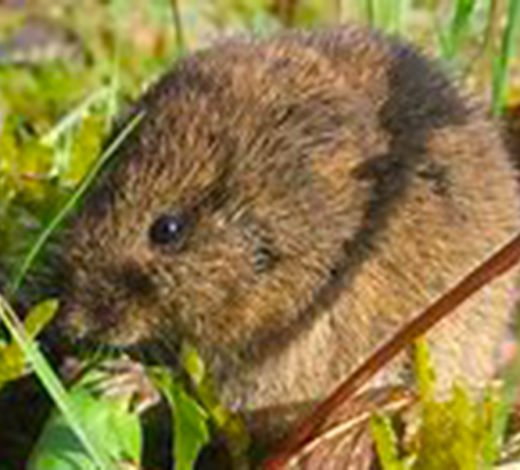Eurasian Harvest Mouse
(Micromys minutus)
A rodent typically found in the rushes, it is also adapted to living among cereal crops.
Distribution
It is widespread in the Po Valley, down to the northern edges of Tuscany and the Marche Region.
Description
A species typically found in the rushes, it is also adapted to living among cereal crops. It is the smallest European rodent, with a body length of about 5 cm and another 5 cm for its prehensile tail, with which it agilely climbs up blades of grass. During the reproductive season, the mice build hanging nests to hold their brood. Each female can give birth up to three times per year. Gestation lasts about 21 days, followed by the birth of a brood of 3–6 babies. The nest is abandoned in winter, when they take refuge in underground nests or man-made structures.
Habitat
They move quickly amid the dense rushes and thin stalks of cereal. They are agile climbers, helped by their prehensile tails, which they use as an additional limb.
Behaviour
They are rather timid and shy and are active mostly at sunset and at night, year round. They move quickly amid the dense rushes and thin stalks of cereal and are agile climbers.
Diet
Their diet consists mainly of seeds (especially cereals), combined with insects and sometimes the eggs of small birds. The mice are solitary, rather timid and shy. They are active mostly at sunset and at night, year round.
Observation in the Torbiera Reserve
They are mainly found among small bushes and bands of tall grasses situated at the edges of the cultivated areas and the rushes bordering the peat bogs. Their presence in the Reserve was once significant, but there are no recent data and they remain very difficult to observe.



